What is a Blind Hole in CNC Machining | Easy Guide
 Sep 19,2024
Sep 19,2024

In engineering and machining, blind holes play an important role in the manufacturing of modern products. This is a design feature with several applications in different industries. but its machining process can be tricky which needs to explore its significance in manufacturing. This article will provide fundamental the topic from the bling hole definition to applications, pros and cons and tips for machining.
What is a Blind Hole
The Blind hole definition is a hole that does not pass through the part. It can be drilled, milled or dreamed to a thread depth which is some part of a total thickness. The thread depth is known by the requirements of fasteners.
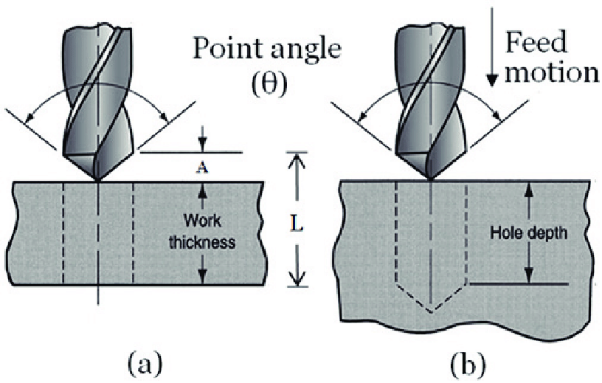
Drilling method (blind hole and through hole.
What is a Blind Hole in Engineering
The blind hole meaning is a hole or pocket that are not thru holes pass through the part. There is a specific thread depth of drilling, reaming or milling which does not completely cover the thickness of material.
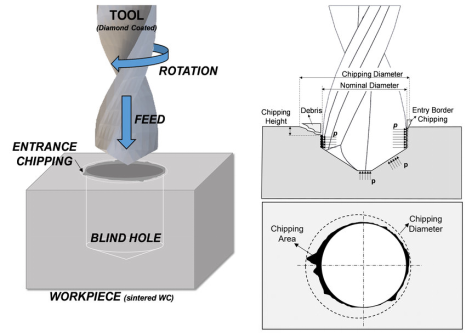
What is a blind hole in machining
In machining, the blind hole meaning is almost the same as engineering. These are not thru holes pass through the parts.
Blind Hole Symbol
Blind hole depth callout is its diameter 'Ø' and a depth specification. The measurements of these symbols are mentioned in the callout. Blind holes are represented in technical drawings with these two symbols.
Blind hole with a flat bottom (HFB, left) and with conical bottom

Thru Hole Symbol
The thru hole depth callout is the diameter 'Ø'. In technical drawings, the diameter and depth symbols are used.
How to mark blind holes for drilling
The layout tools are used to mark blind holes accurately for drilling. The blind holes are created with the orientation match with the desired function of the assembly. This allows a smooth integration with design.
Tool to mark holes for drilling
The layout tools used to mark holes accurately are Deep hole Pencils. Others are Engineers Square and Center Punch. The center punch is useful to make a small dent in the material to start the drilling operation.
Symbol of depth
The hole depth callout or depth symbol indicates the measurement from bottom to outer surface of workpiece. It is used for hole depth representation but slot or counterbores can also be represented by it.
Advantages of Blind Holes
There are several benefits of blind holes. These are:
Better Aesthetics
It improves the aesthetics of manufactured part by concealing fasteners. These are visible without the lump of conventional fasteners.
High Strength and minimal Stress Concentration
The weight of machining blind holes is evenly distributed which increases the strength and stability of material. It reduces the potential stress points and increase the service life of the product.
Minimal Weight and Spacious
Where space is concerned like electronics or aerospace, blind holes allow a compact design creation. The available space can be optimized and make the overall product lightweight and intricate.
Disadvantages of Blind Holes
There are few limitations associated with the blind holes.
Potential Trapped Debris
At the bottom of blind holes, chips and debris can easily be trapped. Their penetration is impossible through the other end of material in blind hole.
Tapping Challenges
Tapping can be challenging through holes. The uniformity is difficult to achieve in thread depth of tapped hole.
Material Deformation
Soft material like aluminium, low carbon steel or ABS are likely to prone to deformation under heat or stress. The material’s integrity is compromised around the blind holes.
Chipping images of machined blind holes
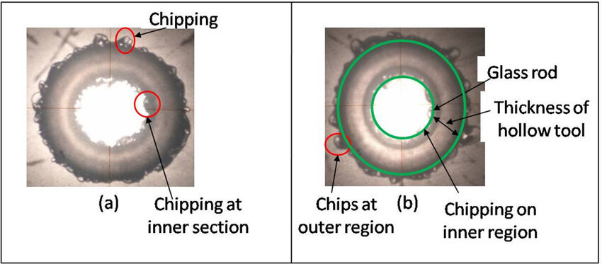
What is a Blind Hole Used for
There are many applications of blind holes. These are like:
Application Examples of Blind Holes
- Aerospace
The manufacturing of aircrafts part is carried out in a way to have a minimum possible weight and have high strength. Blind holes allow these features in aircraft manufacturing.
- Electronic parts
Blind holes are used in electronic circuit boards. These are used to make mounting points such as spacers or connectors. The blind holes offer secure addition without damaging the components.
- Architectural components
Blind holes are aesthetically appealing in metal or wood working. These are mostly created with appealing designs and are filled with contrasting materials such as epoxy resin and metal inlays.
- Automotive
Motor blocks and transmission parts mostly have blind holes for durable attachment and reduce the material usage.
Best Practices of Blind Hole in CNC Machining
It is important to follow the right practice in blind hole in CNC machining to get better results.
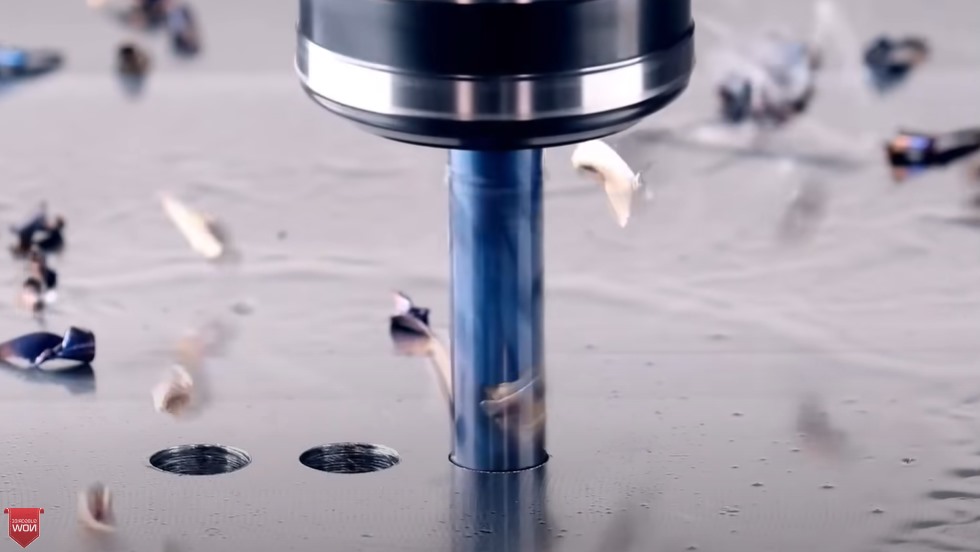
Material Considerations for Blind Holes
Material selection is the essential part because different materials behave differently with machine settings, and this can affect the design and final finish of blind holes. For example, soft materials like aluminum can deform under pressure or heat.
Tolerances and Precision in Blind Holes
It is sometimes challenging to achieve precise tolerances in blind hole design. There are various factors affecting like Material properties, machinability, and the desired application of material. optimal surface finish has direct relation with material properties and machining processes which has a major role in achieving accuracy.
Inspection of Blind Holes
There are many factors that can affect the usability and machinability of blind holes which must be thoroughly inspected. For example, placement and orientation of blind holes, easy machining tool access stress distribution, and the aesthetics of part.
Blind Hole Fasteners
A blind fastener is also called blind rivet hole. It is a special mechanical fastener used for joining two or more materials together. There is only one side accessed of the joint. It creates fastening through pre-drilled holes inside a girder. The rivet hole consisted of just a steel pin, a collar and a sleeve.
Blind Hole vs Through Hole
The Thru holes pass through the thickness of part. While blind holes are not thru holes pass through the part. Both can be threaded for fasteners and left without threads for pin locators.
How to Drill Blind Holes
The guide of blind hole drilling process is explained below:
Drill bit selection
an appropriate drill bit selection is necessary and to know its radius which must correspond to the hole specification. This is then fit in a drill chuck and alignment through adjustment is then confirmed to maintain accuracy.
Workpiece setup
Workpiece must be secured tightly with clamps and vices to prevent deviation during the operation.
Mark the drilling depth
The thread depth must be marked by marking the depth cavity on the drill bit.
Drilling operation
Align the drill bit with the marked location. Initiate the drilling operation with slow speed and maintain a constant pressure throughout the process.
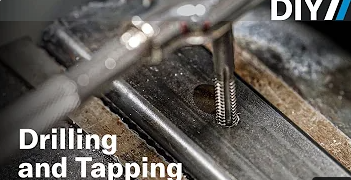
Monitor the drilling depth
Stop periodically to check the distance with desired depth.
Debris removal
Chips and debris generated throughout the drilling process. It must be removed periodically by pausing the process to minimize the drilling efforts.
Wrap up the drilling process
Once the desired thread depth is achieved, finish the drill process by inspecting the drilled holes.
How to Tap a Blind Hole
Use a taper or plug tap to tap the blind holes. Clean out the holes after reaching the bottom. Spiral pointed can be used as it pushes the chips ahead of itself.
Blind hole vs through hole
The thru holes pass through the part, and it is opened with both ends. Blind holes are not like thru holes and is closed with the other end. Blind hole has specific thread depth
Drill depth vs tap depth
The drill tap goes deeper in the metal than the tap to avoid bottoming the tap. The tap depth is tapered and does not tap to the hole bottom of the hole. The drilled hole makes space for chips.
China Tuofa Custom CNC Drilled Parts
China TUOFA offers CNC Drilling services of any complex serial parts and prototypes. Tuofa is a prominent service provider in China and offers ISO-certified CNC drilling parts. Our focus is to adhere to international quality standards with high precision and accuracy of drilled parts.
 Tel/WeChat:
Tel/WeChat:  Email:
Email: 
 Home
Home
 Types of Holes in Engineering and Machining: Symbol, Use
Types of Holes in Engineering and Machining: Symbol, Use 







